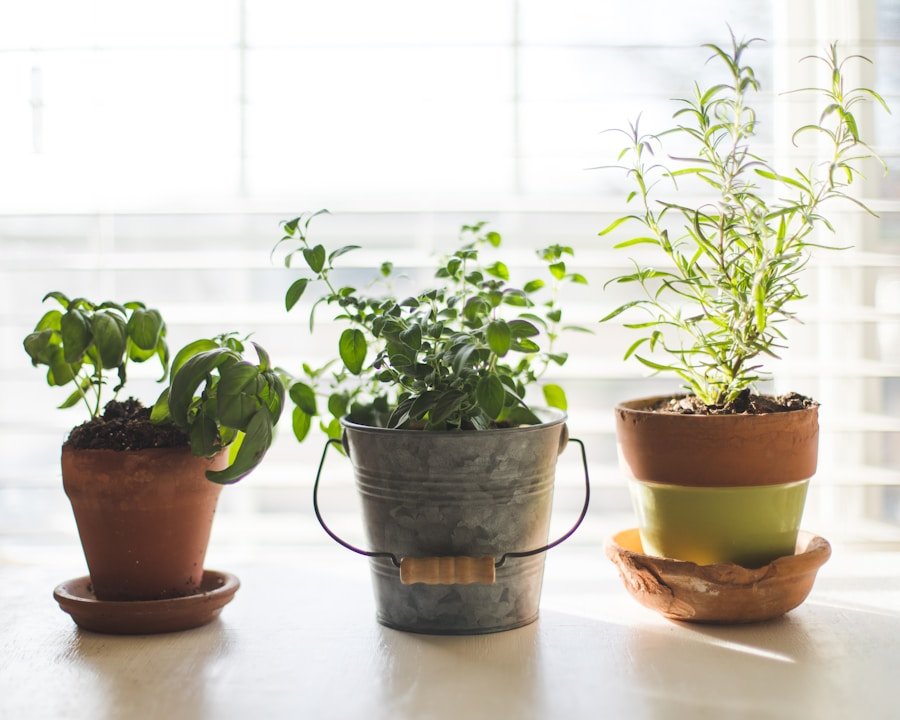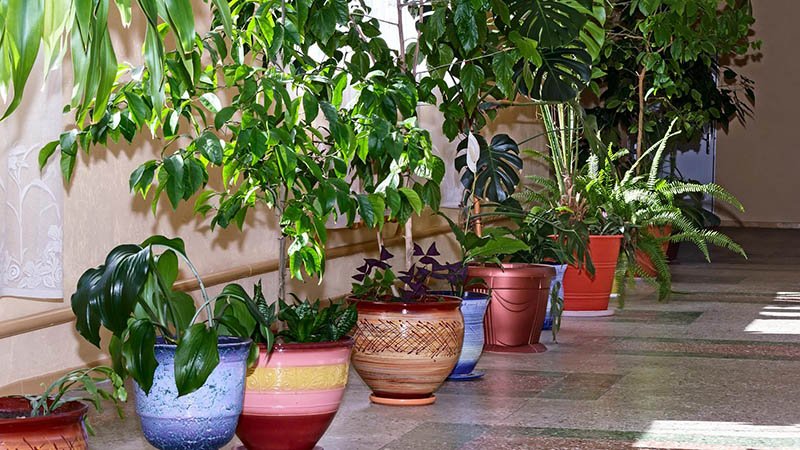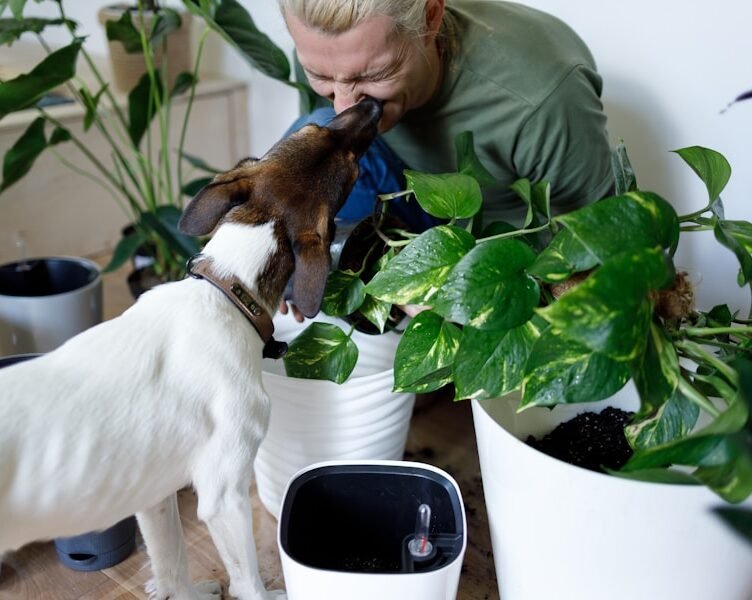Indoor vegetable plants offer a convenient way to engage in gardening year-round, regardless of the season or climate. These plants are specifically bred and cultivated to flourish in indoor environments, making them ideal for individuals who lack access to outdoor gardening space. With proper care and attention, indoor vegetable plants can yield a plentiful harvest of fresh, nutritious produce from the comfort of one’s own home.
Both experienced gardeners and beginners can find suitable options among indoor vegetable plants, catering to their needs and preferences. Growing vegetables indoors can be a fulfilling and enjoyable experience, allowing individuals to connect with nature and reap the rewards of their labor without venturing outdoors. With the right knowledge and resources, anyone can successfully cultivate a variety of vegetables indoors, including leafy greens, root vegetables, and more.
Regardless of living space, whether it be a small apartment or a spacious house, there are numerous options for growing indoor vegetable plants that can accommodate one’s lifestyle and living arrangements.
Key Takeaways
- Indoor vegetable plants are plants that are grown inside the house, typically in containers, to provide fresh produce year-round.
- Growing indoor vegetable plants can provide a convenient and sustainable source of fresh produce, as well as a fun and rewarding hobby.
- Some benefits of growing vegetables indoors include having access to fresh produce year-round, saving money on groceries, and having control over the growing conditions.
- Some of the best indoor vegetable plants for beginners include herbs like basil and mint, leafy greens like lettuce and spinach, and compact vegetables like cherry tomatoes and peppers.
- To successfully grow indoor vegetable plants, it’s important to choose the right containers, provide adequate light and water, and avoid common mistakes like overwatering and using the wrong soil.
Benefits of Growing Vegetables Indoors
Fresh Produce Year-Round
One of the primary advantages of indoor vegetable gardening is the ability to have fresh, homegrown produce at your fingertips year-round, regardless of the weather or season. This is particularly beneficial for those who live in areas with harsh winters or limited outdoor gardening space.
Controlled Growing Conditions
Indoor vegetable plants also allow you to have more control over the growing conditions, including temperature, humidity, and light levels, which can result in healthier and more productive plants. This level of control enables you to tailor the environment to the specific needs of your plants, leading to better yields and higher quality produce.
Additional Benefits
In addition to providing a convenient source of fresh produce, growing vegetables indoors can also be a fun and educational experience for both children and adults. It can be a great way to teach kids about where their food comes from and the importance of sustainable living. Furthermore, indoor vegetable plants can help improve air quality in your home by acting as natural air purifiers, absorbing harmful toxins and releasing oxygen into the air. Overall, growing vegetables indoors can be a rewarding and beneficial activity for both your physical and mental well-being.
Best Indoor Vegetable Plants for Beginners
For those new to indoor gardening, there are several types of vegetable plants that are particularly well-suited for beginners. Leafy greens such as lettuce, spinach, and kale are excellent choices for indoor cultivation, as they require minimal space and can be harvested multiple times throughout their growing season. Herbs like basil, parsley, and cilantro are also great options for beginners, as they are relatively low-maintenance and can add flavor and freshness to your meals.
Additionally, compact varieties of tomatoes, peppers, and cucumbers can be grown indoors with the right care and attention, providing a tasty and rewarding harvest. When choosing indoor vegetable plants for beginners, it’s important to consider factors such as available space, light levels, and personal preferences. Some plants may require more attention and care than others, so it’s important to choose varieties that align with your lifestyle and gardening experience.
With the right selection of indoor vegetable plants, beginners can enjoy a successful and fulfilling gardening experience right from the comfort of their own home.
Tips for Growing Indoor Vegetable Plants Successfully
| Vegetable Plant | Light Requirement | Watering Frequency | Growth Temperature |
|---|---|---|---|
| Lettuce | 6-8 hours of sunlight or grow lights | Regular, keep soil moist | 60-70°F (15-21°C) |
| Tomatoes | 6-8 hours of direct sunlight | Regular, keep soil consistently moist | 70-85°F (21-29°C) |
| Spinach | 4-6 hours of sunlight or bright indirect light | Regular, keep soil consistently moist | 50-75°F (10-24°C) |
| Peppers | 6-8 hours of direct sunlight | Regular, keep soil consistently moist | 70-85°F (21-29°C) |
Successfully growing indoor vegetable plants requires careful attention to their specific needs and growing conditions. One of the most important factors to consider is light exposure, as most vegetable plants require at least 6-8 hours of direct sunlight each day. If natural light is limited in your home, consider using grow lights to supplement the light levels and ensure healthy plant growth.
Additionally, proper watering is essential for indoor vegetable plants, as overwatering or underwatering can lead to stunted growth or disease. It’s important to water your plants consistently and monitor the soil moisture levels to ensure they are receiving the right amount of hydration. Another key aspect of successful indoor vegetable plant growth is soil quality and nutrition.
Choose a high-quality potting mix that is well-draining and nutrient-rich to provide a healthy growing environment for your plants. Consider using organic fertilizers or compost to provide essential nutrients to your plants throughout their growing season. Additionally, proper air circulation and humidity levels are important for preventing mold and disease in indoor vegetable plants.
Consider using a fan or opening windows to promote air flow and reduce the risk of plant issues. By following these tips and paying close attention to your plants’ needs, you can enjoy a successful and bountiful harvest of indoor-grown vegetables.
Choosing the Right Containers for Indoor Vegetable Plants
Selecting the right containers for your indoor vegetable plants is crucial for their overall health and productivity. When choosing containers, consider factors such as size, material, drainage, and aesthetics to ensure they meet the needs of your plants and living space. For smaller plants like herbs and leafy greens, consider using shallow containers with good drainage to prevent waterlogging and promote healthy root growth.
For larger plants like tomatoes or peppers, opt for larger containers with ample room for root development and stability. When it comes to container materials, there are several options to choose from, including plastic, ceramic, terracotta, or fabric pots. Each material has its own advantages and considerations, so it’s important to choose containers that align with your specific needs and preferences.
Additionally, consider the aesthetic appeal of your containers and how they will fit into your home decor. Choosing containers that complement your living space can add an extra touch of beauty and enjoyment to your indoor vegetable garden. By carefully selecting the right containers for your indoor vegetable plants, you can create a healthy and thriving growing environment that will support their growth and productivity.
Common Mistakes to Avoid When Growing Indoor Vegetable Plants
Overwatering: A Common Pitfall
One of the most common mistakes beginners make when growing indoor vegetable plants is overwatering. This can lead to root rot and other issues that can hinder plant growth. To avoid this, it’s essential to monitor soil moisture levels and water your plants only when necessary to prevent waterlogged conditions.
Choosing the Right Soil and Providing Adequate Light
Using the wrong type of soil or potting mix can also hinder plant growth and productivity. Be sure to choose a well-draining potting mix that is specifically formulated for indoor vegetable plants to provide them with the right nutrients and growing environment. Additionally, neglecting proper light exposure can lead to leggy plants or a lack of fruit production. Ensure your plants receive adequate sunlight or supplemental grow lights to support healthy growth and development.
Providing Ample Space for Growth
Overcrowding plants in containers or not providing enough space for root development can lead to stunted growth and reduced productivity. Make sure to give your plants ample room to grow and thrive in their containers. By avoiding these common mistakes and paying close attention to your plants’ needs, you can enjoy a successful and fulfilling indoor vegetable gardening experience.
Harvesting and Using Indoor Vegetable Plants
Harvesting your indoor vegetable plants is an exciting and rewarding part of the gardening process, allowing you to enjoy the fruits of your labor right from your own home. When it comes to harvesting leafy greens like lettuce or spinach, it’s best to pick individual leaves as needed rather than harvesting the entire plant at once. This allows the plant to continue producing new leaves over an extended period of time.
For herbs like basil or parsley, harvest leaves as needed by snipping them off with scissors or pruning shears, being careful not to remove more than one-third of the plant at once. When it comes to harvesting fruits like tomatoes or peppers, wait until they are fully ripe before picking them from the plant. This will ensure that they are at their peak flavor and nutritional content.
Once harvested, use your indoor-grown vegetables in a variety of delicious recipes such as salads, soups, stir-fries, or sandwiches. The fresh flavor and nutritional value of homegrown produce can add an extra level of enjoyment and satisfaction to your meals. By harvesting and using your indoor vegetable plants in creative and delicious ways, you can fully appreciate the benefits of growing your own food right from the comfort of your own home.
In conclusion, indoor vegetable plants offer a convenient and enjoyable way to bring the joy of gardening into your home year-round. With the right knowledge and resources, anyone can successfully grow a variety of vegetables indoors, providing a source of fresh produce that is both nutritious and rewarding. By choosing the best indoor vegetable plants for beginners, following tips for successful growth, selecting the right containers, avoiding common mistakes, and harvesting and using your produce effectively, you can enjoy a thriving indoor vegetable garden that adds beauty and vitality to your living space.
Whether you’re an experienced gardener or just starting out on your gardening journey, indoor vegetable plants offer endless possibilities for creativity, enjoyment, and sustainable living right from the comfort of your own home.
FAQs
What are indoor vegetable plants?
Indoor vegetable plants are varieties of vegetables that can be grown and cultivated inside a home or building, typically in containers or small garden beds.
What are some common indoor vegetable plants?
Some common indoor vegetable plants include tomatoes, peppers, lettuce, spinach, kale, herbs like basil and parsley, and microgreens.
What are the benefits of growing indoor vegetable plants?
Growing indoor vegetable plants allows individuals to have access to fresh, homegrown produce year-round, regardless of the outdoor climate. It also provides a convenient and sustainable way to incorporate more vegetables into one’s diet.
What are some tips for growing indoor vegetable plants?
Tips for growing indoor vegetable plants include providing adequate light, proper watering and drainage, using quality soil or potting mix, and ensuring proper air circulation. Additionally, it’s important to choose varieties that are well-suited for indoor growing conditions.
Can indoor vegetable plants be grown without natural sunlight?
Yes, indoor vegetable plants can be grown without natural sunlight by using artificial grow lights or LED lights specifically designed for plant growth. These lights provide the necessary spectrum of light for photosynthesis and plant development.






